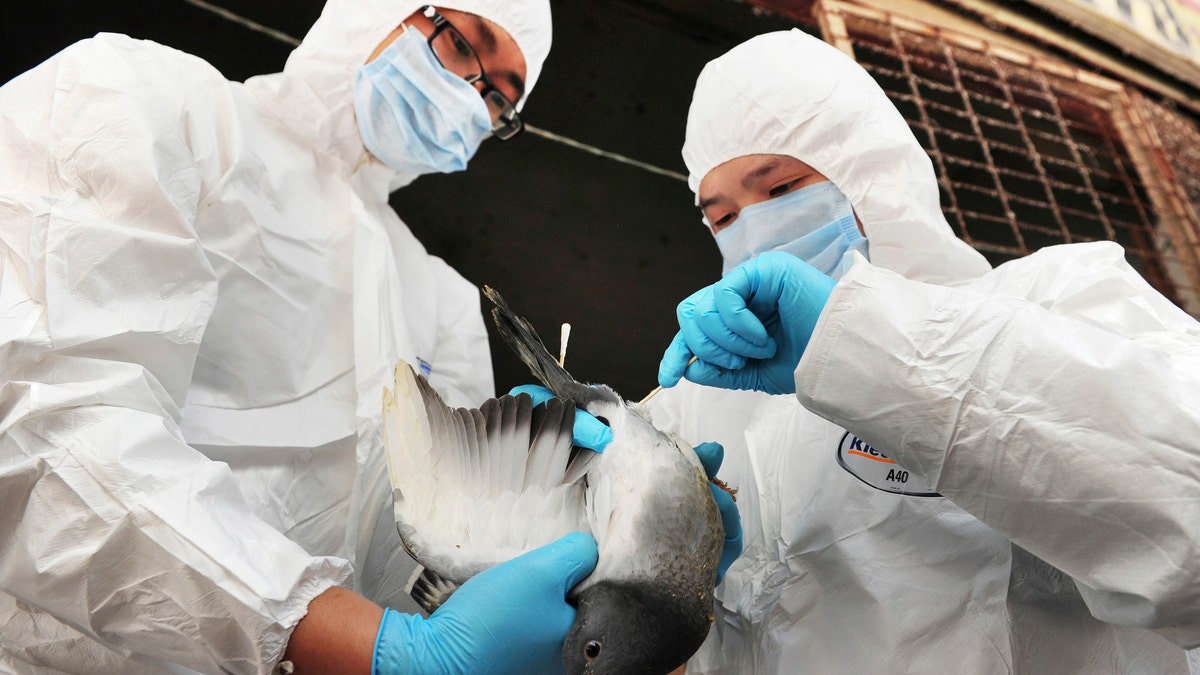
Health officers examine a pigeon for H7N9 at a poultry market in Changsha, Hunan province. (REUTERS/China Daily)
Using a technique that allows for making larger vaccine quantities than previous methods, a team of researchers has produced an experimental vaccine for the deadly H7N9 flu strain.
Scientists used cells from a dog's kidney to make a vaccine against H7N9 a type of flu carried by birds that was first seen in China last year by allowing the virus to grow in the cell culture and then treating the mix to kill the part of the virus that causes illness. The idea is that the animal cell culture can produce a lot more of the virus and its associated proteins, said the researchers, who work for the companies that made and tested the vaccine, Novartis in Boston and Accelovance in Rockville, Md. They detailed their work April 30 in the journal Science Translational Medicine.
"We're taking a virus already adapted to humans and amplifying it in a cell culture," said Niranjan Kanesa-thasan, head of special projects at Novartis Vaccines and Diagnostics and a co-author of the study. Novartis developed the vaccine in conjunction with another company, Synthetic Genomics Vaccine Inc., with funding from the government. [5 Dangerous Vaccine Myths]
Many vaccines are produced using eggs, but this method can't always produce the amounts of vaccine necessary for lots of doses. Viruses sometimes fail to grow in eggs, and contamination can spoil a batch. Cell cultures from animals have been used before to make vaccines, but this is the first time the technique has been applied to H7N9.
H7N9 has infected 375 people and caused 115 deaths, according to the World Health Organization. There's no evidence that the virus is transmitted from person to person most patients so far have been infected by contact with birds.
The new vaccine consists of virus proteins called hemagglutinins that can provoke people's immune response, protecting them from future infection. The researchers also tested vaccines with another ingredient, called MF59, a type of oil-and-water mix. The study participants were divided into four groups, three of which got varying amounts of MF59 along with the vaccine proteins, and one of which got the vaccine proteins only.
In the study, 402 people got the vaccine, and they all showed the same immune response as the people who had been exposed to H7N9 and survived, or had only mild symptoms, according to the study.
This shows that the vaccine is effective, Kanesa-thasan said, though there are some caveats. The true test of a vaccine comes when people are exposed to the actual virus. While the scientists said they are pretty confident that it could work, it hasn't been tested in the field yet.
The vaccine can be made faster than others, so if there is an H7N9 outbreak, health officials could use it to react quickly or take preventative measures, the researchers said.
Copyright 2014 LiveScience, a TechMediaNetwork company. All rights reserved. This material may not be published, broadcast, rewritten or redistributed.
